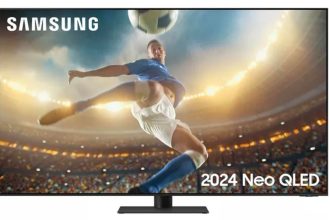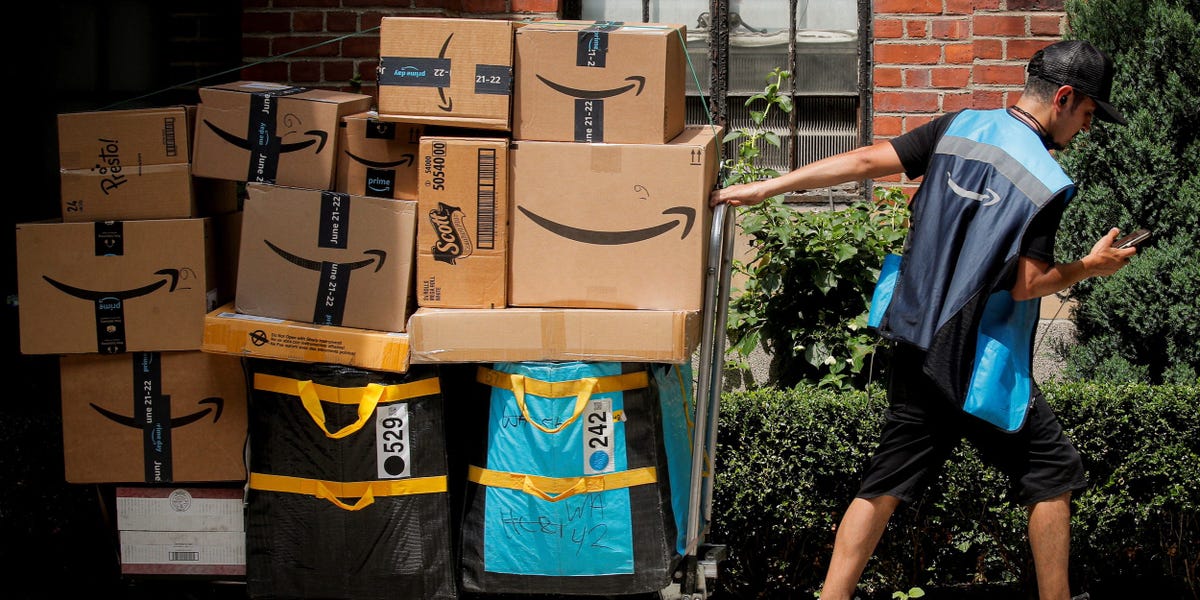- Amazon is pitching advertisers on its ad-buying tools that place ads on Amazon’s own properties and other publishers’ websites.
- Ad buyers said Amazon’s demand-side platform is going head-to-head with Google and The Trade Desk.
- Amazon is also allowing sellers to drive ad traffic to direct-to-consumer websites to expand its base of advertisers.
Amazon is making a new pitch to cut into the ad dollars that marketers spend with rivals like Google and The Trade Desk, multiple ad industry sources said.
In recent meetings, the e-commerce giant has been touting the new capabilities of its “demand-side platform,” software that uses automation to send targeted ads to people, both on Amazon’s own properties and across the web, according to ad buyers who have been recently briefed by Amazon reps.
The advertising consultancy Jounce Media predicts that Google, The Trade Desk, and Amazon will collectively control about 63% of the DSP market share this year, with Google owning 41%, The Trade Desk capturing 12%, and Amazon getting 11%.
Amazon is trying to chip into Google’s and The Trade Desk’s share by poaching “non-endemic” advertisers — or companies that don’t sell products through the e-commerce giant, said Hannah Grobmyer, VP and global Amazon lead at Kepler Group.
Finance and insurance companies reap the benefits of Amazon’s improved ad platform
One way that Amazon is gunning for bigger programmatic budgets is by using machine learning models to help advertisers find new customers at cheaper rates. Amazon’s DSP has historically not been as strong in performance as Google and The Trade Desk, said Travis Johnson, global CEO of Amazon agency Podean.
For example, the cost advertisers paid to acquire a new customer could be two to three times higher with Amazon’s DSP compared to Google and The Trade Desk in the past, he said.
Ad buyers briefed by Amazon said that these tweaks particularly benefit financial institutions and insurance companies. Those companies don’t sell on Amazon, but have become some of Amazon DSP’s top clients from using the new tools and Amazon’s data to fine tune their ad targeting.
“We have financial services brands that have high privacy expectations and are interested in that pitch,” said Grobmyer from Kepler Group.
Amazon is letting advertisers link to their own websites
For the first time, Amazon is letting advertisers drive traffic from ads to their own websites for products that are also sold on Amazon.
Advertisers have had the option to route ad clicks to their own websites for a couple of years, but only when advertising products that are not sold on Amazon — like automotives and insurance companies. Previously, ads for products that were sold on Amazon were routed back to Amazon.
Now, Amazon is allowing advertisers who sell products on Amazon to drive traffic to their own websites so they can manage their own direct-to-consumer sales, said Podean’s Johnson.
For example, he said, an apparel company that sells its products both on Amazon and its own site can now run ads through the Amazon DSP that appear on publishers like CNN, and those ads can link back to the apparel company’s own website.
This ability has been largely requested by direct-to-consumer brands and targeting those brands shows how Amazon Advertising is trying to grow its clients beyond the merchants that mostly sell on Amazon.
“These are areas where Amazon hasn’t focused previously but is helping the customer base for the DSP broaden,” Podean’s Johnson said.
Amazon’s push is still new, and it remains to be seen if new advertisers buy in. For instance, Pete Stein, president of Americas for ad agency Merkle, said that he doesn’t expect many advertisers to drive ad traffic back to their sites, because it’s easier for customers if they’re routed to Amazon to buy.
And even with Amazon’s improvements, it’s unlikely that Google and The Trade Desk will drop off media plans, because they continue to bring unique value. Amazon has data around what people purchased, but The Trade Desk has access to lots of diverse streaming TV inventory from broadcasters and Google has exclusive access to its own properties like YouTube.
Different advertisers will continue to prioritize these different ad platforms, depending on their needs, Stein said.
Google and The Trade Desk declined to comment for this story.
Read the full article here





